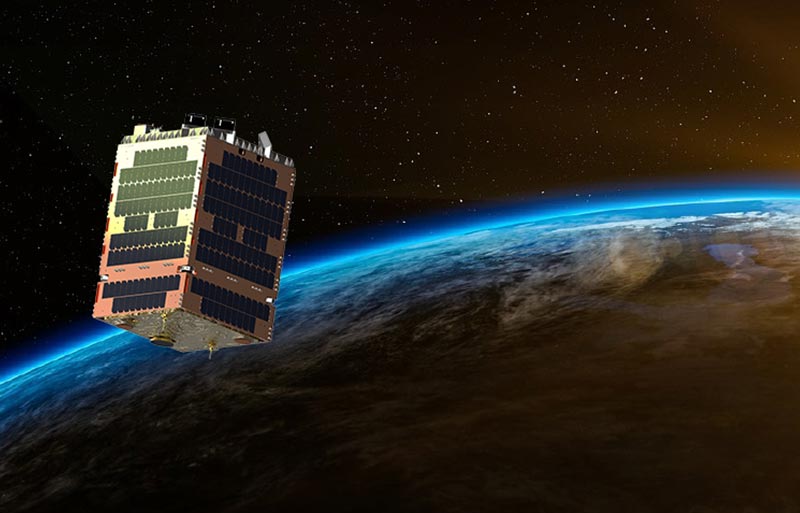Telesat’s Lightspeed constellation is fully financed after the Canadian company awarded MDA with a contract to build 198 satellites; in the process eschewing Thales Alenia Space and saving the satellite operator a cool US$2 billion.
The new contract with MDA, a space technology firm, is worth CAD$2.1 (US$1.6 billion) and will see satellite launches for the constellation start in the middle of 2026, with services expected to begin in late 2027. Due to the switching in manufacturer Telesat’s Lightspeed satellites will be 75 per cent smaller than in the original designs by Thales but they will still provide the same performance, according to Telesat CEO Dan Goldberg, as digital beam-forming array antennas will be used instead of analogue terminals.

Telesat’s first Low Earth Orbit (LEO) satellite was launched in January 2018. Courtesy: Telesat.
With an expected price tag of US$3.5 billion – to cover Telesat Lightspeed satellites, satellite launch vehicles, a global ground network of landing stations and operations centres, and business and operations support systems – the move to change manufacturers, saving Telesat US$2 billion, seems both savvy and crucial to get the constellation off the ground.
The company plans to fund the programme’s global service launch, which will occur once the first 156 satellites are in orbit, using US$1.6 billion from its own equity, and a further US$2 billion from Canadian federal and provincial financing. It then hopes to use revenue from the constellation to fund the final 42 satellites.
The path for Telesat’s Lightspeed constellation to reach orbit has not always seemed so clear. The project was originally announced in 2016 with plans to launch the first of 298 satellites in 2019 but the operator dallied for too long, only selecting Thales Alenia as prime contractor for the multi-billion dollar project in February 2021. The pandemic and global supply chain problems added to the growing costs of the constellation and compelled the company to reduce the size of the constellation to 198.








